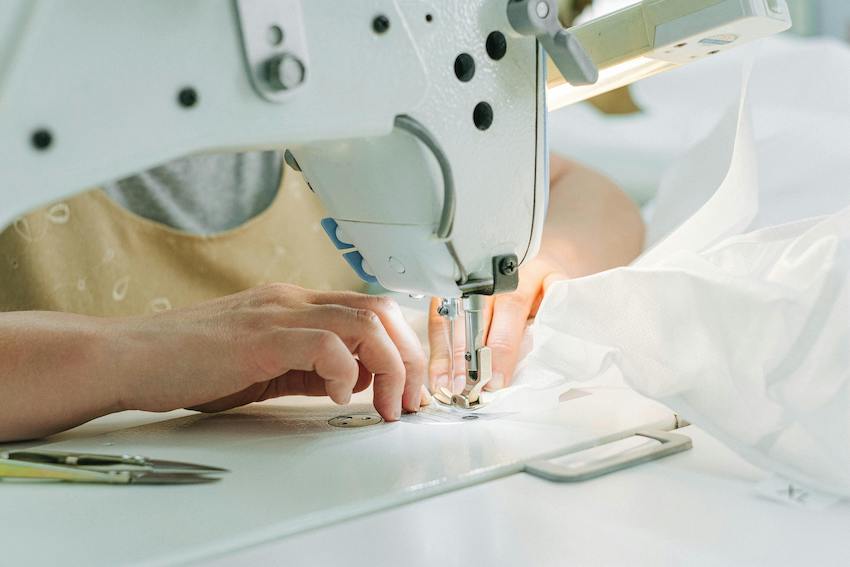The Expert Guide: How to Find the Right Product Partner for Your Brand

As a highly experienced Production Director with more than a decade in the industry, Alyssa Paparatto has a wealth of knowledge in managing apparel production, from sourcing raw materials, importing goods and running logistics. She has held production roles at fashion brands such as Mara Hoffman, Sies Marjan and Ralph Ruchi.
She shares her knowledge on the different types of manufacturers that are available and how to find them, how to evaluate and vet potential partners plus tips for building a strong and collaborative relationship.
Why your production partner matters
Your production partner is more than just a manufacturer that you go to for your goods or the products that you present to the world. You want to provide high-quality products to get your customers to keep coming back and trust you and build a relationship with your brand.
What you’re looking for from your manufacturing partner is the expertise to execute your designs flawlessly. You also want to control the costs so you can optimize the production expenses. Deadlines are also extremely important and you want to make sure that you can be on the same page with your manufacturing partners.

Types of manufacturers available
Local vs international
I’ve worked with both local and overseas manufacturers, and they have their pros and cons. Local obviously depends on where you are are in the world – local for me is the US – which can help lower your shipping costs, from say, New York to your warehouse.
Face-to-face communication is huge and with domestic partners, I’m able to go to the factories and work on things face to face, which helps a lot. It’s also great for building relationships and forming bonds with the factories you work with. And, pro tip, you do have faster turnaround times because you can be there in person and you can push a little bit more when it’s not just an email that someone’s getting in their inbox that they can leave for later.
One of the cons of local manufacturers is that labor can sometimes be higher but at the same time, you need to take into consideration that local labor costs are just the rules and regulations. Then, they’re usually not vertical. By that I mean that it does not include the costs of getting your fabric to the factory, for example. You basically pay for your fabric to be landed and while you can source them from mills in the US, majority of them have to be imported. And once those goods are landed, you have to facilitate everything it takes to make your product.
For overseas manufacturers, you have the pros of lower labor costs and larger production capacities. If you’re putting out thousand or more units, your turnaround time is going to be a lot more efficient overseas than if you were in the garment district in New York. There are also higher shipping costs involved as you’ll have duty and freight charges on your finished goods, which would not apply if you were producing locally.
Large scale vs artisan
Large-scale manufacturers have a high-volume production, which means that they have established processes and they usually operate like well-oiled machines. Artisan producers specialize in specific skills. They have unique craftsmanship, where you can have greater customizations and lower production capacity but higher costs is one of the cons; large-scale producers usually offer more competitive pricing. There’s likely to be less flexibility and limited customization with big manufacturers but artisans are have expertise in specific skills, which can offer you greater customizations for your designs.
Specialized vs general
Specialized manufacturers have expertise in certain techniques, products or materials, while generalists have versatility in various product types, although they may lack experience expertise in niche areas. This is something to have in mind when it comes to cut-and-sew factories versus ready-to-wear factories, for example – the machinery for each process can be very different. There are factories that will claim to be able to do it all but that is sometimes not true.
Finding potential manufacturing partners
One of the ways to do this is attending trade shows and industry events. If you can, connect with manufacturers in person to see the work firsthand. Tapping into your network another way. I frequently reach out to people I’ve worked with in the past. Ask them for referrals or to intrude you to their contacts in the industry.
And, of course, use online platforms such as The Folklore Source. The CFDA website has also been a lifesaver for me at times. You can go on there to like look for cutting, pattern makers from LA to New York, which is really helpful. LinkedIn is a great place to find partners and lately a lot of manufacturers even reach out to find new clients that way. Maker’s Row is another website and it allows you to filter your search by criteria.
Vet your potential partners and make sure you research their reputation by reading client reviews and checking their certifications. It can be really hard to find great partners but there is a lot of information out there that can help you make the right decisions.

Valuation criteria
Non-negotiables
Quality standards: Does their work meet your expectations?
Certifications: Do they have relevant certifications such as Fair trade or organic?
Other factors
Minimum order quantities (MOQs): Are they reasonable for your production volume?
Timelines: Can they meet your deadlines and handle urgent orders?
Communication: Are they responsive, clear and detail oriented?
Pricing: Understand the breakdown of costs, from development and sampling, to production pricing and any additional fees
Ethics and sustainability: Do their practices align with your brand’s values?
When you’re making the first contact with a potential manufacturer, be prepared with your designs and tech packs, and any questions that you might have such as your desired quantities or the timeline that you’re working with.
Warning signs or red flags to look out for are unclear communication or evasive answers, and lack of references and samples. Make sure to ask the right questions about minimums, production lead times and payment terms.
Building strong partnerships
Contracts: Contracts are a good idea, even for small orders because it protects everyone. It should outline responsibilities, timelines, payment terms and quality standards, protecting both your brand and the manufacturer.
Clear communication: Make sure to regularly communicate your expectations, deadlines or any issues that arise.
Be respectful: Treat your manufacturer as a partner, not just a supplier.
Celebrate success: Acknowledge their contributions and impact to the growth of your brand.
Your production partner is your ally
The right manufacturing partner is not just a supplier, they’re a strategic partner invested in your brand success. Their expertise can significantly impact product quality, cost efficiency and your brand’s reputation.
Define your needs before your search
Understand your production volume, budget, quality level and timeline before seeking out a manufacturer. This clarity will guide you towards the right fit for your brand.
Do your homework
Don’t rush the selection process or into a relationship with a manufacturer. Conduct thorough research on potential partners. Ask detailed questions about their work and request references or samples.
